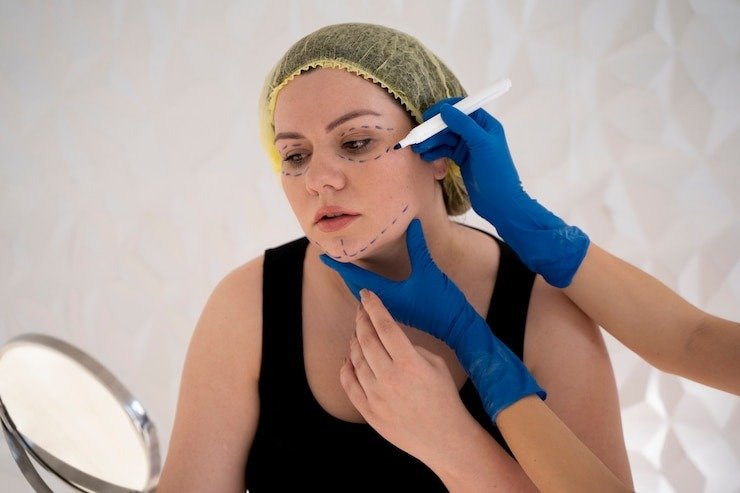From clinical obscurity to a remarkably visible form of self-affirmation, facialfeminization surgery, or FFS for short, has undergone a transformation. It was once thought to be specialized, but now it’s a very good choice for people who want to match their internal identity with their physical attributes. It’s a sophisticated reconstruction of emotional health and self-perception rather than merely a superficial improvement.

In order to help patients achieve a facial silhouette that more accurately reflects their gender identity, surgeons may reshape the bone structure, lift the brow, soften the jawline, or smooth the throat. The motivation is deeply human, even though the science is extremely technical. Many people find that hormone therapy is insufficient to produce noticeable changes; FFS fills the gap left by biology.
Key Details on Facial Feminization Surgery
| Aspect | Details |
|---|---|
| Name | Facial Feminization Surgery (FFS) |
| Also Known As | Facial Gender Affirming Surgery |
| Ideal Candidates | Trans women, nonbinary individuals, or those seeking a more feminine face |
| Common Procedures | Forehead contouring, rhinoplasty, jaw reshaping, tracheal shave |
| Recovery Duration | 2–6 weeks for initial healing, 12 months for full results |
| Permanency of Results | Permanent (except temporary fillers) |
| Emotional Outcomes | Reduced gender dysphoria, enhanced self-image, social comfort |
| Notable Risks | Nerve damage, visible scarring, infection, voice changes (rare) |
| Reference |
Public discussions about gender identity have significantly improved over the last ten years, in large part due to media visibility. In addition to their advocacy, celebrities such as Elliot Page and Laverne Cox have paved the way by candidly discussing the importance of physical transition for mental health. Many people see these procedures as a matter of survival and visibility rather than vanity, especially those who are nonbinary or assigned male at birth.
FFS’s scope is extremely flexible. Every procedure is customized to the patient’s objectives and distinct facial structure. For instance, the bony ridge directly above the eyes can be reshaped or flattened with forehead contouring. For a smoother appearance, the brow bone that is especially noticeable is either shaved down or removed and rebuilt. Some people combine this with a brow lift to open the eye area and raise the eyebrows, giving them a softer, more stereotypically feminine look.
Another key component, rhinoplasty, balances facial symmetry in addition to narrowing the nose. Bone and cartilage are reshaped to provide definition that is both aesthetically beautiful and profoundly reassuring. The contouring of the jaw is no different. In order to create a V-shaped lower face, which is typically thought of as more traditionally feminine, surgeons smooth out sharp corners and refine the projection of the chin while being careful to maintain each person’s uniqueness.
Although tracheal shaving, also known as chondrolaryngoplasty, may appear to be a minor alteration, it has profound emotional effects. A noticeable Adam’s apple attracts unwelcome attention for many patients. People report much less anxiety in social situations after having it surgically reduced. This procedure, which is frequently finished in less than two hours, has a low risk profile, very clear results, and little recovery time.
Despite being physically taxing, there is hope at every stage of this surgical journey. Although recovery times vary, many patients are able to resume their activities in a matter of days. While full recovery and swelling reduction may take up to 12 months, most people can resume light activity in less than two weeks. Absorbable sutures are frequently used by surgeons to minimize the discomfort associated with stitch removal, and customized aftercare procedures are meticulously created to promote the best possible healing.
The social ramifications of FFS are just as significant as the medical ones. Passing as one’s affirmed gender can make the difference between safety and harm in many communities. These practices are not only cosmetic but also life-saving for people navigating public restrooms, job interviews, and dating. This is especially true in the early phases of recovery, when bruising and swelling may momentarily mask the effects. However, even during this vulnerable period, patients frequently report feeling significantly better and having a growing sense of self.
The emotional changes must also be addressed. When their outer self finally reflects their inner truth, many patients refer to their post-surgery reflection as a “homecoming.” Stories of people who have struggled with dysphoria for years and are now comfortable making eye contact, smiling in pictures, or speaking in public without feeling self-conscious are not unusual.
The trend toward insurance inclusion has accelerated, despite the fact that FFS can be expensive and access is still unequal. A number of states and private insurers now acknowledge FFS as medically necessary for transgender care, a success in advocacy that reflects the procedure’s long-standing value, thanks to strategic legal efforts and health policy reform.
Public conversation has changed as a result of celebrities and public figures sharing their experiences. Clinics have been motivated to train specialists and extend services in additional cities by their voices, which have been amplified across platforms. The stigma that was previously associated with gender-affirming surgeries has been greatly diminished as a result of this visibility. FFS is a living example of both medical advancement and individual strength today.
According to social impact studies conducted in recent years, people who have facial feminization procedures report significantly better mental health scores, stronger social ties, and higher employment rates. When carried out by skilled surgeons, the procedure provides a very dependable answer to a very personal need.
